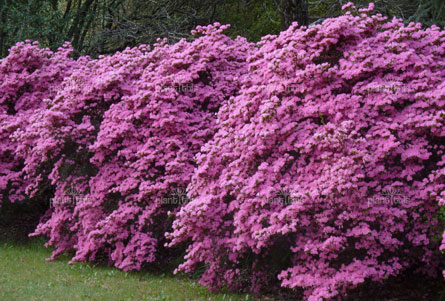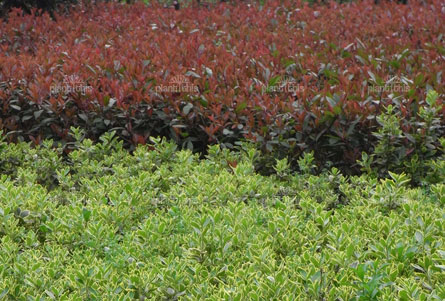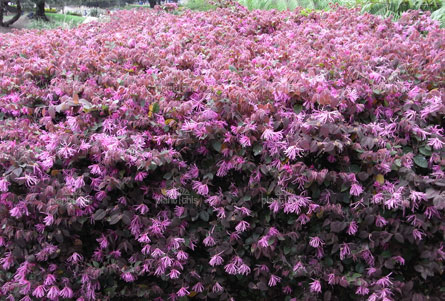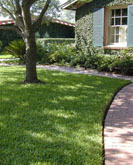planting
Please login or become a member to start adding favourite plants & articles to your profile.
planting a hedge
QUICK TIPS:
1. Prepare the soil
2. Choose your plant style
3. Calculate spacings then quantities
4. Buy healthy, uniform plants
5. Prune early and often
6. Maintain water and nutrient levels
Hedges are a versatile device for creating privacy, screening out eyesores, marking a boundary or dividing spaces within your yard.
These living walls are built by placing plants in close competition for resources. Give them a strong foundation by thoroughly preparing their planting area first.
Decide if the garden design needs a formal, clipped hedge; or a looser look where flowers or fruit are allowed to develop. Also consider the desired height of the hedge and whether it should be evergreen for year-round privacy or deciduous for extra winter sun. Our Plant This Plant Selector will help you choose the right plant.
The plants will be spaced at a distance about 1/4 to 1/3 of their natural mature height, and one hole dug 1/2 a spacing length in from either end of the planting bed. To determine how many plants are needed in between, divide the remaining distance by the spacing length. For wide hedges, a double row - planted at staggered intervals - might be the way to go.
It's good insurance to buy a couple of extra plants in case a ready replacement is required. Only choose plant stock from the one species; that's uniform in size and appearance; and with full, healthy leaf cover down to the base.
Planting holes can be located with the help of string lines and crosses marked out with lime. After the standard planting, watering and mulching procedures are done, pruning is the critical special operation for a good hedge - and this starts immediately.
Be brave and cut back any dominant, vertical shoots to the body of your new plants. Give each an all-over light trim to encourage new shoots and create a bushier plant. Leaving plants untrained to reach the desired height before starting to prune only leads to a hedge with holes below.
With patient and continued trimming, let these short bushy plants grow steadily until they knit into one dense hedge of the right height. Ideally, prune them to taper slightly toward the top so that sunlight can always get to the lower foliage.
Clip flowering hedges after they've flowered or wait until after the fruiting display.
As hedges are planted so closely and foliage constantly removed, it's important to replace water and nutrient, and treat any sign of pests or disease quickly before it can spread.
Comments (0)
Tell our Plant Selector what you want & like and we'll search thousands of plant profiles for compatible matches
Special Offers

Plant of the Day
Regent False Sarsaparilla
Plant type: evergreen climber
H: 1m W: 0.75m
Sunlight: hot overhead sun to warm low sun

Fast Facts
hedges
Decide if the garden design needs a formal, clipped hedge; or a looser look where flowers or fruit can be left to grow. Also consider the desired height of the hedge.
Recently added planting articles
Most viewed planting articles
Get the Plant Selector's full features plus news, forums & competitions. Sign up, it's free.
Click here for more











You must be a member to share: Login or Register